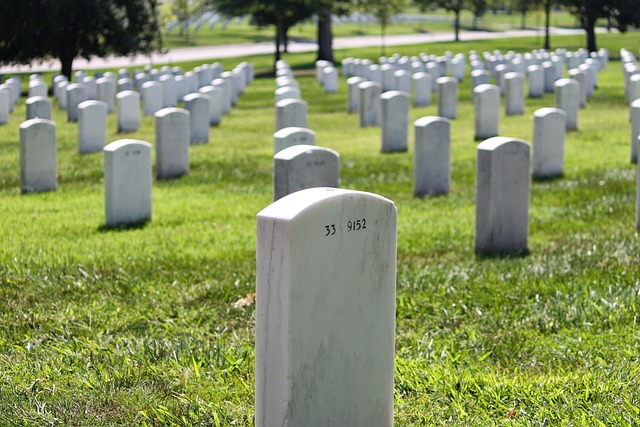VA Respite Care: Support for Disabled Veteran Caregivers

The Department of Veterans Affairs provides treatment and compensation for veterans with service-connected disabilities, but what about the other side of the equation for those who provide care?
Veterans who need in-home care may qualify for VA assistance to find, pay for, and use in-home services. The caregivers themselves may qualify for VA assistance through the VA Respite Care Program, which is part of the VA Program of Comprehensive Assistance for Family Caregivers.
>>Never miss a benefits update. Subscribe to the MyMilitaryBenefits Newsletter NOW.
Program of Comprehensive Assistance for Family Caregivers
The Department of Veterans Affairs describes this program’s offerings as “enhanced clinical support for Family Caregivers of eligible Veterans.” That support may include financial compensation for caregivers, in-home respite care, adult day care, and institutional stays as respite care options.
You may qualify for this option if you meet specific VA criteria. The veteran must have a serious injury (or illness) incurred in the line of duty in the active military, naval, or air service during any service era.
The applicant must have a service-connected disability rating by the Department of Veterans Affairs (VA) of 70% or more, and need of personal care services for a minimum of six continuous months based on any of the following:
- An inability to perform an activity of daily living.
- A need for supervision or protection based on symptoms or residuals of neurological or other impairment or injury.
- A need for regular or extensive instruction or supervision, without which the ability of the veteran to function in daily life would be seriously impaired.
Those who qualify based on the above criteria may also qualify for VA help for a primary caregiver. According to VA.gov:
“Veterans can designate one (1) Primary Family Caregiver and up to two (2) Secondary Family Caregivers on the application. “Secondary Family Caregivers are a backup support “to the Primary Family Caregiver when needed. Services will depend on whether you are the Primary Family Caregiver or a Secondary Family Caregiver.”
Under the VA Program of Comprehensive Assistance for Family Caregivers, primary caregivers may qualify for:
- A monthly stipend
- Access to health care insurance through the Civilian Health and Medical Program of the Department of Veterans Affairs.
- Mental health counseling.
- Certain beneficiary travel benefits are available when traveling with the veteran to appointments.
- The veteran receives 30 days of respite care per year. Respite care is short-term relief for someone else to care for the veteran while the primary caregiver takes a break.
Those who choose a primary caregiver under this program face a dilemma. What happens when that caregiver needs to take a break, attend to personal needs, or take time away from serving the veteran? Part of the VA Program of Comprehensive Assistance for Family Caregivers addresses this critical need.
>>Never miss a benefits update. Subscribe to the MyMilitaryBenefits Newsletter NOW.
The VA Respite Care Option
VA Respite Care is a service under the VA Program of Comprehensive Assistance for Family Caregivers that temporarily relieves the veteran’s primary caregiver, usually a family member or a close friend who provides regular, consistent, and often intensive care for the veteran.
Respite Care services are not automatically granted; they must be applied for (see below), and caregivers must meet qualifying criteria.
Eligibility for VA Respite Care
To qualify for VA Respite Care, the veteran must be enrolled in the VA healthcare system. A VA healthcare provider must assess and determine a medical need for the service.
The specific criteria for eligibility can vary to some extent, depending on the particular type of respite care being sought and the Veteran’s unique circumstances, including their current health status and the specific level of care they require.
Medical Need Assessment
A dedicated VA healthcare team conducts an assessment of the veteran’s medical condition. This includes evaluating their functional limitations and determining the precise level of assistance they require with Activities of Daily Living (ADLs). ADLs are basic self-care tasks essential for independent living, such as bathing, dressing, eating, and moving.
The assessment also considers their need for help with more complex activities necessary for independent living, including managing finances, preparing meals, managing medications, using the telephone, and shopping. The greater the need for assistance with these activities, the stronger the case for respite care.
Caregiver Strain
While the primary focus of the assessment is always on the Veteran’s medical and functional needs, the VA acknowledges the burden placed on caregivers. The need for respite care is often identified when the VA healthcare team observes that the primary caregiver is experiencing stress, showing signs of physical or emotional exhaustion, or is at a heightened risk of burnout.
Applying for VA Respite Care
You can apply for VA Respite Care online in person, or by mail:
- Apply Online: VA Online Application
- Apply In Person: Bring VA Form 10-10CG to your local VA facility’s CSP Team. Contact the Caregiver Support Line at 855-260-3274
- Apply By Mail: Download and print the application: VA Form 10-10CG (PDF). Mail the form and any supporting documents to:
10-10CG Evidence Intake Center
PO Box 5154
Janesville, WI 53547-5154
>>Never miss a benefits update. Subscribe to the MyMilitaryBenefits Newsletter NOW.
Nature of VA Respite Care
VA Respite Care is not an open-ended benefit and does not provide an indefinite benefit. There are typically defined limits on the maximum number of days of respite care a veteran can receive within a year.
While the precise number of days may change depending on individual needs, VA policy updates, and resource availability, Respite Care is typically capped at 30 days per calendar year.
In-Home Respite Care
This is frequently the most preferred and widely utilized type of respite care because it allows the Veteran to remain within the comfort and familiarity of their own home environment. Under this model, a trained and qualified caregiver comes directly to the Veteran’s residence.
Their role is to provide attentive supervision and assistance with daily tasks, thereby enabling the primary caregiver to either leave the home for personal activities or rest and attend to other matters within the home, knowing the Veteran is cared for.
The scope of services offered through in-home respite care depends on the veteran’s needs. Options may include hands-on assistance with personal care activities, preparing light meals or snacks, offering companionship and engaging in conversation, and supervision to maintain safety and prevent accidents.
The goal for this Respite Care option is for a temporary replacement caregiver to take over the primary caregiver’s duties for a specified period.
In-home respite care is typically coordinated directly through the Veteran’s VA healthcare team. Often, a VA social worker or case manager will play a central role in assessing the need and then coordinating with VA-approved home care agencies that provide these services.
Institutional Respite Care
This form of respite care involves the Veteran temporarily relocating to a VA facility or a community-based facility that has a contract agreement with the VA. This temporary stay could be in a VA Community Living Center, a private nursing home with a VA contract, or another approved medical or long-term care facility. The duration of stay is predetermined to provide the necessary relief.
Within an institutional setting, veterans receive continuous medical supervision by healthcare professionals, skilled nursing care, meals, plus structured recreational and therapeutic activities.
This option is good for veterans with more complex medical needs, require specialized equipment, or need a higher level of constant supervision and professional oversight than can be practically provided in a home setting, even with in-home respite care.
Institutional respite provides a highly structured and medically supervised environment, offering a robust safety net. It is an ideal solution when the primary caregiver requires an extended break or when the veteran’s medical or behavioral needs are too demanding for temporary in-home care.
Applying for institutional respite care necessitates close coordination with the Veteran’s VA healthcare team who will perform an assessment of the veteran’s medical and functional requirements and then facilitate appropriate placement in a VA-owned or VA-contracted facility where applicable.
Adult Day Health Care (ADHC)
Adult Day Health Care programs provide supervised care and a structured environment in a community-based setting during daytime hours. Veterans attend these centers for several hours on specific days, typically weekdays, and then return to their homes in the evenings. It’s a daytime alternative to full-time institutional care.
ADHC centers offer a comprehensive and engaging program. This includes regular health monitoring by healthcare staff (physical therapy exercises, or cognitive stimulation), social engagement and peer interaction, meals, and assistance with personal care. These centers provide a supportive environment for veterans who might feel isolated or have a lack of structured activity at home.
This option allows primary caregivers to run errands, attend their own appointments, or enjoy personal time during the day, all while knowing the Veteran is receiving professional care and engaging in meaningful activities.
Veterans can be referred to VA-approved ADHC centers within their local community by their VA healthcare team. The team will help identify suitable programs that align with the Veteran’s needs and geographical location.
>>Never miss a benefits update. Subscribe to the MyMilitaryBenefits Newsletter NOW.
About the author
Editor-in-Chief Joe Wallace is a 13-year veteran of the United States Air Force and a former reporter/editor for Air Force Television News and the Pentagon Channel. His freelance work includes contract work for Motorola, VALoans.com, and Credit Karma. He is co-founder of Dim Art House in Springfield, Illinois, and spends his non-writing time as an abstract painter, independent publisher, and occasional filmmaker.


